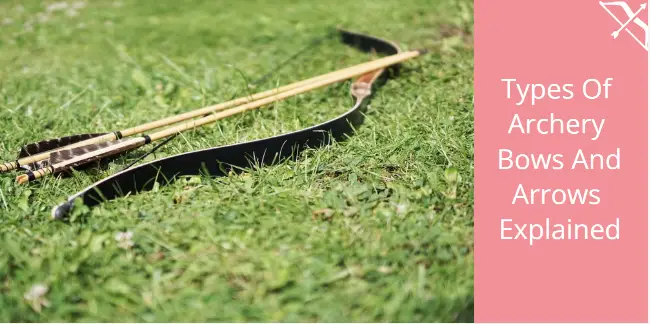Types Of Archery Bows And Arrows Explained

There are not many sports that can compete with archery when it comes to popular appeal and ensuring history. It has gone through several generations and still is one of the most loyal fanbases in the world. The evolution in equipment, rules, and techniques indicate the fact that people still cherish the old ways while keeping room for innovation and modernity.
There should come as no surprise that archery bows and arrows come in many forms, sizes, and shapes. If you are just starting out, you should know which one will suit your goals as well as your personal style.
Archery Bow Types
This used to be a battle weapon, which has now been replaced with guns. But that does not mean you cannot enjoy it as a hobby or cannot compete at a professional level.
Before you do either, it is best to know what tool you are going to use.
So, the following are some of the most common types of archery bows:
Recurve Bow
Many of the novices in the field of archery starts their journey with this classical bow. This does not imply that this bow has nothing to offer to the pros. It is because many of the modern versions of this recurve bow are used in Olympic competitions.
The unique, signature shape of this bow lends it the name. Its central part, which makes the better part of the bow, curves towards the archer, and its tips go in the opposite direction. The configuration facilitates the archer in covering more distance with less power while shooting the arrow. That is the main reason why these recurve bows are used to teach archery.
For beginners, the version with two bow limbs, a riser, and a balancer is used to give them much control to shoot the target.
For the sake of portability, the modern iterations of these bows can be disassembled because of their modular construction. In addition to that, this recurve bow can accommodate a more skilled archer by giving room to install sights, pressure buttons, stabilizers, etc.
This is an excellent bow for beginners and intermediate archers. It provides necessary support without sacrificing range accuracy and power to hit the bull’s eye!
Compound Bows
Compound bows were developed back in the 1960s. They are still considered to be the most modern archery bows today. As the name suggests, they are not simple and basic and can come with all the options and extensions you can find for your bow. They employ an intricate system of cords and cables, pulleys and unique cams, and other customization options. This aids the archer in holding the weight of a heavy draw.
No matter the bells and whistles on this bow, you need great strength to draw this bow. When you do that, the pulley system comes into play and lets you hold the draw for a much longer duration. This way, you will have much focus on the aim without worrying about muscle fatigue.
Contrary to other basic and more classic models in archery bows, these bows are exclusively made of synthetic materials that can last for many lifetimes. This implies that they are not much susceptible to humidity and fluctuations in temperature.
It is not a great fit for beginners and intermediate archers. The reason is its expensive nature and the complexity of its operations.
Longbow/ Traditional Bow
Again, these archery bows are popular for their simplicity and no-nonsense character towards the goal – hitting the target with accuracy. These simple bows have a long, slightly curved body that measures in length the same as the archer. As for the customization options like arrow rests or sights, they do not have room for these, owing to their medieval origin.
They are not even for pros but for a limited number of aficionados that have proper training and expertise in handling this piece of equipment. It is because they are much difficult to aim and require more strength to draw when compared against modern bows. Also, they are no match for the velocity.
Aptly known as the medieval bow, longbows were used for the first time during a battle around 1298. Since its introduction, it became a dominant weapon, owing to its ability to throw projectiles to the enemy lines. In the ballads and epic poems from that era, many poets had claimed that the victories at multiple battles were due to this lethal weapon.
Until the 16th century when other iterations of bows and other projectile-throwing weapons were refined, longbows had enjoyed the dominance to be the most effective tool of war, especially during sieges and defense.
It is a simple piece of wood with no break, and certainly no room for customizations, like sights, pressure clickers, etc. In the modern world, beginners cannot work around this bow due to the lack of support systems and big frame. Therefore, they are still reserved for the masters of archery because of complex operations and other predicaments.
Read more about Archery
